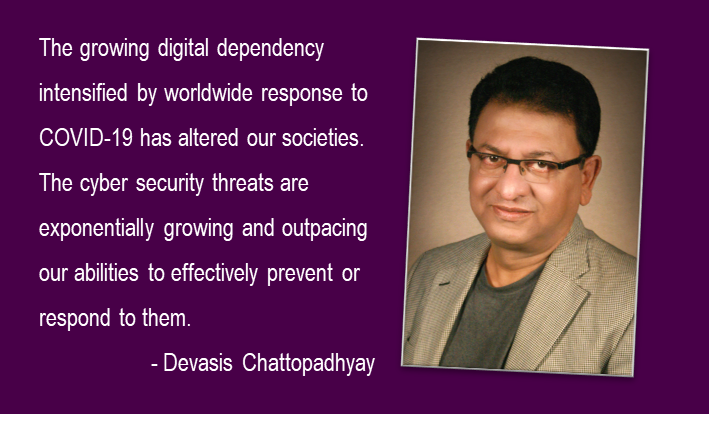Risk is all around us. After the pandemic, it is not surprising that the level and variety of risks we face have become more pronounced than before. Like infectious diseases have now become one of the top societal risks which we would not have imagined even a decade ago. For Public Relations professionals, it is imperative, as we work towards risk mitigation, that we understand which risks are top of mind in 2022 and possibly beyond.
In the Global Risks Report 2022, World Economic Forum (WEF) shared that in the current global outlook and disparities because of growing divergences in the areas of climate transition, cybersecurity, mobility, and outer space adventures, our world will get affected unprecedentedly.
“Social cohesion erosion”, “livelihood crises” and “mental health deterioration” are three of the five risks seen as the most immediate threats to the world in the next two years. This socio-economic scarring compounds the challenges of political and economic policymaking and weakening of international cooperation on global challenges. The health of the planet, also, remains a constant concern. Environmental risks—in particular, “extreme weather” and “climate action failure”—appear as top risks in the short, medium and longer-terms. In the medium term, economic risks such as “debt crises” and “asset bubble burst” will emerge as governments will struggle to balance fiscal priorities. In the longer-term, geopolitical, and technological risks are of concern too, including confrontations among nations, and failure of cybersecurity with increased virtual crime.
According to WEF, all the global risks in 2022 and beyond fall into the following five categories:
- Economic
- Environmental
- Geopolitical
- Societal
- Technological
And the top 10 Global Risks by severity for next 10 years are:
- Climate Action Failure – Environmental
- Extreme Weather – Environmental
- Biodiversity Loss – Environmental
- Social Cohesion Erosion – Societal
- Livelihood Crises – Societal
- Infectious Diseases – Societal
- Human Environmental Damages – Environmental
- Natural Resources Crises – Environmental
- Debt Crises – Economical
- Geo-economic and Cyber Security Confrontations – Geopolitical and Technological
Environmental risks continue to dominate the scenario, accounting for 5 of the top 10 risks by impact, especially for climate action failure. Several countries are off-track in meeting emissions goals set by the Paris Climate Agreement in 2015, while the pandemic has also delayed progress in the shift towards a carbon-neutral economy. Meanwhile, biodiversity loss is occurring at unprecedented rates. Look at Kuwait and its weather. One of the world’s wealthiest oil-exporting nations is becoming un-liveable.
COVID-19 has resulted in a myriad of direct societal risks, from youth disillusionment and mental health deterioration to livelihood crises. The first two risks go hand-in-hand, as young people are staring down a turbulent future and are likely to report acute distress from disrupted educational and economic prospects.
As in major economies, they kicked monetary stimulus into high gear to prop up markets and support many closed businesses and quarantined families, the economic outlook seems more fragile than ever before. Debt-to-GDP ratios continue to rise across advanced economies—if GDP growth stagnates for too long, a potential debt crisis could see many businesses and major nations default on their debt. And investments in equities and stocks, directly or indirectly, are no indicator of good economic health in countries like India where less than 5 percent of population takes part in Bourses.
With a greater stress accumulating on a range of major industries such as travel and hospitality, the economy risks a build-up of zombie organisations–companies those can barely repay the interest on their debts and cannot repay the principal and would drag down overall productivity. In India, we have repeated experiences of such.
COVID-19 has raised the alert on various technological risks. Despite the sped-up shift towards remote work and digitalisation of various industries, digital inequality leaves those with lower digital literacy behind—worsening existing inequalities.
Tech and platform-based companies are also bloating even further. The market share some such companies hold in their respective sectors, such as the Amazon in online retail, and Netflix in entertainment, threatens to erode the activities of other players. Uber would have been in the same league had it not squandered its advantages away because of management inefficiencies.
The growing digital dependency intensified by worldwide response to COVID-19 has altered our societies. The cybersecurity threats are exponentially growing and outpacing our abilities to effectively prevent or respond to them. Pegasus is just the tip of the iceberg. Attacks on critical infrastructure, misinformation, fraud, and digital safety will affect public trust in digital systems and will increase socio-economic and political challenges and are no longer fodder for blockbuster movies. As attacks become more frequent, severe, and impactful, already-sharp tensions between governments affected by cross-border cybercrimes and governments complicit in their commission will rise as cybersecurity becomes another wedge for divergence, rather than cooperation, among nation states.
Growing insecurity as economic hardship, worsening impacts of climate change and political persecution will force millions to leave their homes in search of a better future. As a result, migratory labour will increase. Yet in many countries, lingering effects of the pandemic, increased economic protectionism and new labour market dynamics are resulting in higher barriers to entry for migrants who might seek opportunity or refuge in newer geographies for survival.
And, for the experts and professionals who advise on mitigation of risk – the profession of Public Relations would become a more coveted branch of the social sciences and sought-after profession if we can equip ourselves with greater knowledge and efficient delivery mechanism.
The views and opinions published here belong to the author and do not necessarily reflect the views and opinions of the publisher.



Be the first to comment on "The Global Risk Assessment Report and the Role of Public Relations"